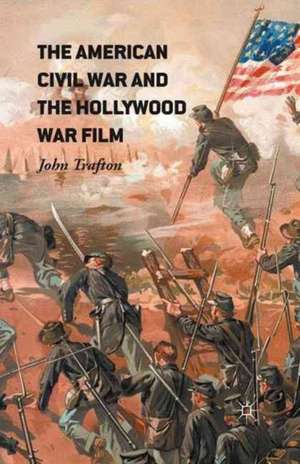The American Civil War and the Hollywood War Film
Autor John Traftonen Limba Engleză Paperback – 8 feb 2016
Preț: 196.28 lei
Nou
Puncte Express: 294
Preț estimativ în valută:
37.56€ • 38.75$ • 31.34£
37.56€ • 38.75$ • 31.34£
Carte tipărită la comandă
Livrare economică 26 martie-09 aprilie
Preluare comenzi: 021 569.72.76
Specificații
ISBN-13: 9781349573875
ISBN-10: 1349573876
Pagini: 203
Ilustrații: IX, 194 p.
Dimensiuni: 140 x 216 mm
Greutate: 0.25 kg
Ediția:1st ed. 2016
Editura: Palgrave Macmillan US
Colecția Palgrave Macmillan
Locul publicării:New York, United States
ISBN-10: 1349573876
Pagini: 203
Ilustrații: IX, 194 p.
Dimensiuni: 140 x 216 mm
Greutate: 0.25 kg
Ediția:1st ed. 2016
Editura: Palgrave Macmillan US
Colecția Palgrave Macmillan
Locul publicării:New York, United States
Descriere
The American Civil War was viscerally documented through panorama paintings, photography, and soldier testimonials, leaving behind representational principles that would later inform the development of war film genre codes. This book explores how each of these representational modes cemented different formulas for providing war stories with pathos.
Cuprins
Introduction: The Civil War, Pathos Formula, and Genre Memory
1. Civil War Paintings and the War Panorama2. Panorama, Phantasmagoria, and Subjective Vision in War Cinema
3. War Photography
4. Photography and the War Film
5. The Soldier Diary
6. Civil War Epistolary and the Hollywood War Film
Coda
1. Civil War Paintings and the War Panorama2. Panorama, Phantasmagoria, and Subjective Vision in War Cinema
3. War Photography
4. Photography and the War Film
5. The Soldier Diary
6. Civil War Epistolary and the Hollywood War Film
Coda
Notă biografică
John Trafton is Research Coordinator at the University of St Andrews, UK.
Textul de pe ultima copertă
Throughout film history, war films have been in constant dialogue with both previous depictions of war and contemporary debates and technology. War films remember older war film cycles and draw upon the resources of the present day to say something new about the nature of war. The American Civil War was viscerally documented through large-scale panorama paintings, still photography, and soldier testimonials, leaving behind representational principles that would later inform the development of the war film genre from the silent era up to the present. This book explores how each of these representational modes cemented different formulas for providing war stories with emotional content.
Caracteristici
Argues that war films remember older war film cycles and draw upon the resources of the present day to say something new about the nature of war
Demonstrates the development of the war film genre from the silent era up to the present
Explores how representational modes cemented different formulas for providing war stories with emotional content
Demonstrates the development of the war film genre from the silent era up to the present
Explores how representational modes cemented different formulas for providing war stories with emotional content
